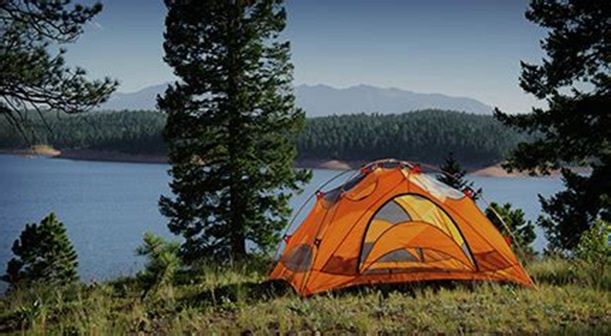Visit the National Park Service websites for trails and hiking, and wilderness and backcountry camping. Primitive camping, also commonly referred to as backcountry camping, forgoes reservation campsites in favor of more remote areas without amenities such as bathrooms, running water or first aid supplies.
Facilities: undesignated campsites, stream water source(purify before drinking) and vault toilets. However, we also note that managers can and have carefully selected a subset of sustainable designated campsites near water bodies that adequately protect those resources while retaining high-quality opportunities for visitors to camp near water. We suggest that a containment strategy (1) can help eliminate unnecessary campsites, (2) can effectively shift use to the most sustainable small-footprint” campsites that will resist expansion, and (3) allows flexibility to incorporate alternative setback distances dependent on the specific setting and type of resource in need of protection (water quality, riparian vegetation, wildlife, rare species, cultural resources, and recreational quality).
Forest Service managers of the Desolation Wilderness in California restrict camping to designated campsites within 500 feet of four particularly popular lakes (Lake of the Woods, Grouse, Hemlock, and Eagle). Campsite drainage that collects and flows along an incised water access trail or natural drainage swale directly to a water body poses a substantial threat to water quality (Figure 2). In contrast, campsites that drain with sheet flow through more than about 25 feet (7.6 m) of relatively undisturbed vegetation and organic litter are likely to pose little threat to water quality (Figure 1, grassy site). For example, Lucas (1982) used camping setbacks from water as a regulatory example throughout an article titled Recreation regulations: When are they needed?” Lucas suggested beginning the decision process by describing the problem, which for camping setbacks can be ecological (are riparian shorelines more vulnerable to resource impacts than more distant locations?), or social (are shoreline campsites too visible, is solitude diminished, or are there conflicts with other visitors?).
Regression modeling of 25 possible factors explaining campground occupancy data yielded three significant factors, including (1) the percentage of waterfront campsites (explaining 84% of variation), (2) the reputation of the water body for fishing (8%), and (3) the length of time the campground had been open (7.6%). Frequently confused with campsites, campgrounds and RV parks, trailer parks are made up of long term or semi-permanent residents occupying mobile homes, park trailers or RVs. Mann Lake Recreation Site – Just north of the Alvord Desert—which was once a lake itself—Mann Lake holds water year-round and is home to a host of quaint campsites that all offer immediate access to the lake and great fishing.
Olallie Lake, Camp Ten Campground – Though swimming is not permitted in Olallie Lake, as it is a source of drinking water, this site comprised of ten small campgrounds offers lovely views of Olallie Butte and enjoys serenity and privacy. Frog Lake Campground – Though campsites offer immediate access to the lake, none are situated to have a view of Mount Hood. Trillium Lake Campground – Campsites are fairly difficult to reserve, and once you arrive you’ll understand why.
Fish Lake Campsites – This is a great spot to camp if you’re in the area looking to paddle the McKenzie River or to take advantage of the excellent mountain biking trails nearby. Dorena Reservoir, Baker Bay Campground – Here, 15 of the nearly 50 campsites are directly on the waterfront—posing a good argument for you to reserve and arrive early so that you can take full advantage of all that Baker Bay has to offer. Lost Lake Campground – Not to be confused with the Lost Lake tucked underneath Mount Hood, this one features a handful of basic campsites in an excellent location near the top of Santiam Pass.
Due to heavy use, hikers are required to stay at designated campsites or shelter sites in the Great Smoky Mountains National Park in Tennessee and North Carolina and most of the northern half of the Trail. Dispersed camping is allowed at least 10 yds from water sources, 50 yds from building ruins, 50 yds from “no camping” signs, 50 yds from other parties, 1/4 mi from roads, and more than 100 yds from huts, cabins and day-use shelters.
It is incredibly important to make use of water filters and purifiers when camping. What may appear as clean water could contain deadly microbes and viruses? The best option for on the go water filtration is a system or travel bottle from www.usaberkey.com

